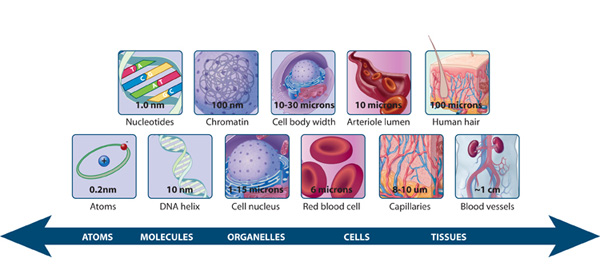The relative scale of biological molecules and structures
Keywords
Flag Inappropriate
Delete Content

The relative scale of biological molecules and structures
Cells can vary between 1 micrometer (μm) and hundreds of micrometers in diameter. Within a cell, a DNA double helix is approximately 10 nanometers (nm) wide, whereas the cellular organelle called a nucleus that encloses this DNA can be approximately 1000 times bigger (about 10 μm). See how cells compare along a relative scale axis with other molecules, tissues, and biological structures (blue arrow at bottom). Note that a micrometer (μm) is also known as a micron.
This image is linked to the following Scitable pages:
All cells evolved from a common ancestor and use the same kinds of carbon-based molecules. Learn how cell function depends on a diverse group of nucleic acids, proteins, lipids, and sugars.





















Comments
CloseComments
Please Post Your Comment